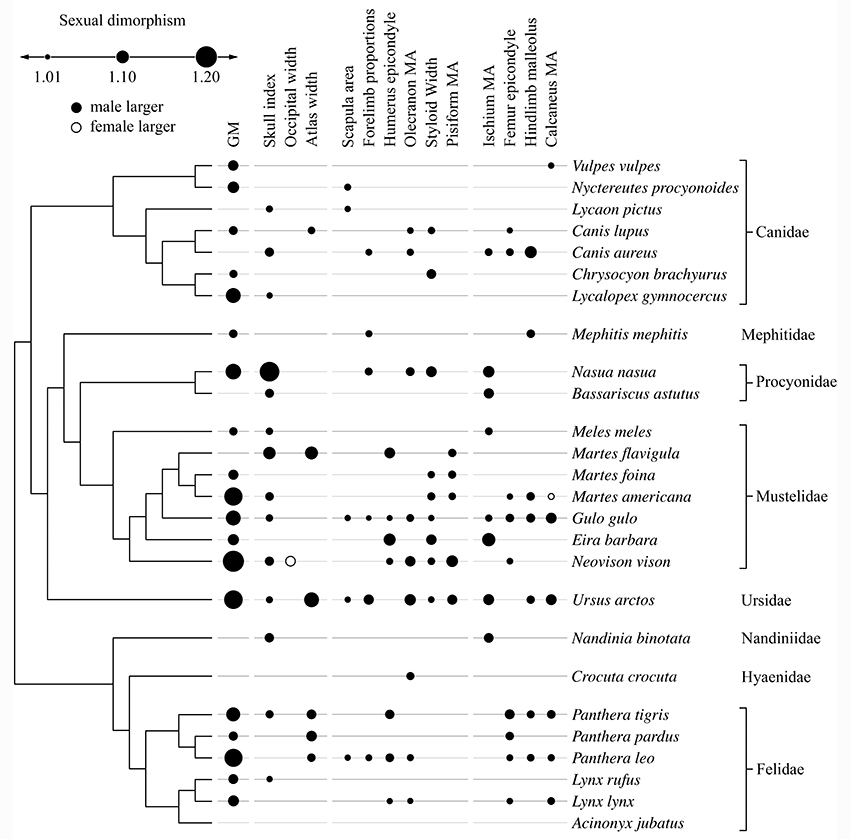Sexual dimorphism refers to the phenotypic differences between males and females of the same species, encompassing a vast array of characteristics including size, color, and morphology. This concept poses intriguing questions about the roles and functions that these differences serve in evolutionary biology and social structures. Should we consider males and females of a species as different, or even separate entities? This inquiry extends beyond biology and touches upon cultural relativism, where the understanding of these differences can be interpreted variably across different societal contexts. In this exploration, we delve into the science behind sexual dimorphism while contextualizing it within cultural frameworks.
Evolutionary Perspective on Sexual Dimorphism
Sexual dimorphism is deeply rooted in the evolutionary history of species. From an evolutionary standpoint, the differences between male and female organisms often arise from sexual selection, a form of natural selection whereby certain traits enhance reproductive success. Male peacocks, for example, develop elaborate plumage to attract females, a phenomenon that vividly illustrates the dynamics of sexual selection at play. Conversely, female organisms often exhibit traits that enhance their survival, which enables them to successfully raise offspring. Such divergent evolutionary pressures engender the striking differences we observe.
Types of Sexual Dimorphism
Sexual dimorphism manifests in a myriad of ways, significantly impacting morphology, behavior, and even cognitive functions. The subtleties of these differences can be categorized into several types:
- Size Dimorphism: One of the most common forms, size dimorphism is evident in species like lions, where males are substantially larger than females. This physical disparity can impact social dynamics and mating rituals.
- Color Dimorphism: In many bird species, males exhibit vibrant plumage while females are often drab, providing them with camouflage for nesting. This contrast plays a crucial role in attracting mates while simultaneously enhancing survival prospects for females.
- Morphological Dimorphism: Beyond size and color, differences in skeletal structure or body shape can be pronounced. For instance, male insects often sport larger mandibles, which are essential during mating contests or territorial displays.
- Behavioral Dimorphism: Behavioral differences between sexes can be equally pronounced. Males may engage in competitive behaviors, while females might display nurturing tendencies, thereby fulfilling distinct roles in reproductive success.
- Cognitive Dimorphism: Emerging studies suggest that cognitive abilities may differ by sex, impacting problem-solving strategies and social behavior relevant to their roles within species.
Understanding these dimensions requires a multidisciplinary approach, drawing from anthropology, biology, and sociology, to unravel the complex interdependencies at work.
Sexual Dimorphism and Cultural Relativism
Cultural relativism posits that a society’s beliefs and practices should be understood based on its own context rather than be judged by external standards. Within this framework, sexual dimorphism can take on various meanings across cultures. For example, in some societies, pronounced differences between genders may reinforce traditional roles, dictating societal norms and expectations. In contrast, cultures advocating for gender fluidity and equality may challenge reductive interpretations that emphasize inherent biological differences.
The interpretation of sexual dimorphism also informs gender identity and roles in contemporary discourse. In Western societies, for instance, the persistence of binary gender classifications may stem from an emphasis on physical and behavioral differences. This dichotomy can lead to rigid stereotypes, which may not accurately reflect the spectrum of gender experience. In other cultures, where gender identities are more fluid, the significance attributed to dimorphic traits may be minimized, allowing for a more inclusive understanding of identity.
Implications for Sexual Dimorphism in Society
Exploring the implications of sexual dimorphism extends into various spheres of life. In evolutionary terms, the physical differences between males and females can influence mate selection, reproductive strategies, and even familial structures. For instance, in a patriarchal society, men may dominate resource acquisition based on size or strength, further entrenching gender disparities.
Furthermore, the media often perpetuates stereotypes grounded in sexual dimorphism through targeted marketing and representations of gender roles. Iconic portrayals of masculinity and femininity, largely based on physical characteristics, reinforce cultural norms that dictate behavior and expectations. Such archetypes can distort public understanding of the complex interplay between biology and culture.
Moreover, scientific research can play a dual role, serving both to elucidate sexual dimorphism’s biological underpinnings and to challenge the prescriptive narratives surrounding these differences. For example, research demonstrating the plasticity of gender roles may encourage re-evaluation of societal norms and inspire progressive changes in educational and familial structures.
Conclusion: A Multifaceted Inquiry
Ultimately, the question of whether males and females constitute different species transcends a simple yes or no answer. The science of sexual dimorphism reveals profound biological differences that are inseparable from cultural interpretations. As societies evolve, the understanding of sexual dimorphism may continue to shift, necessitating an ongoing dialogue that respects both biological realities and cultural nuances. In this intricate tapestry of existence, recognizing the fluidity of gender and the spectrum of human experience fosters a more comprehensive understanding of the human condition.
